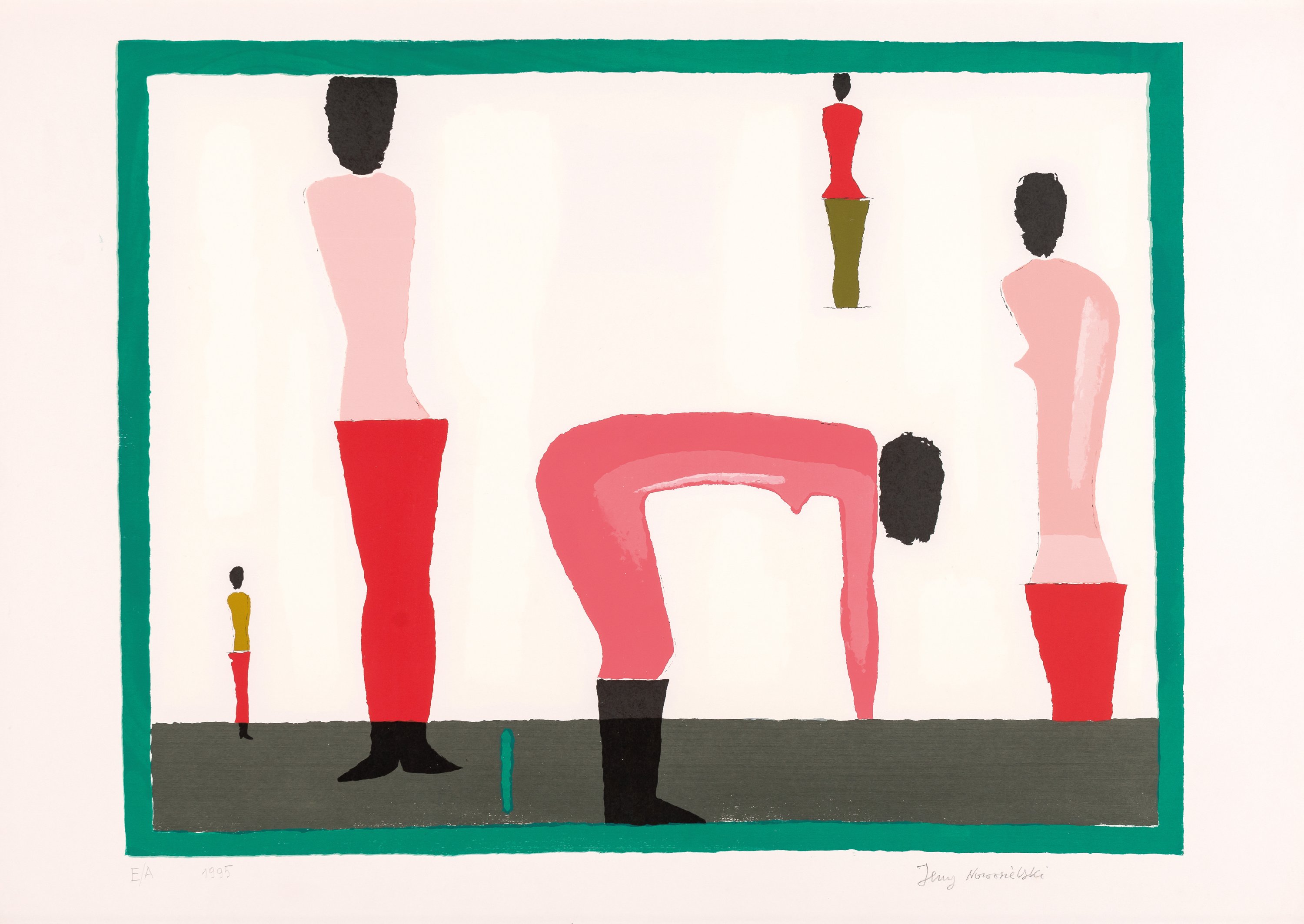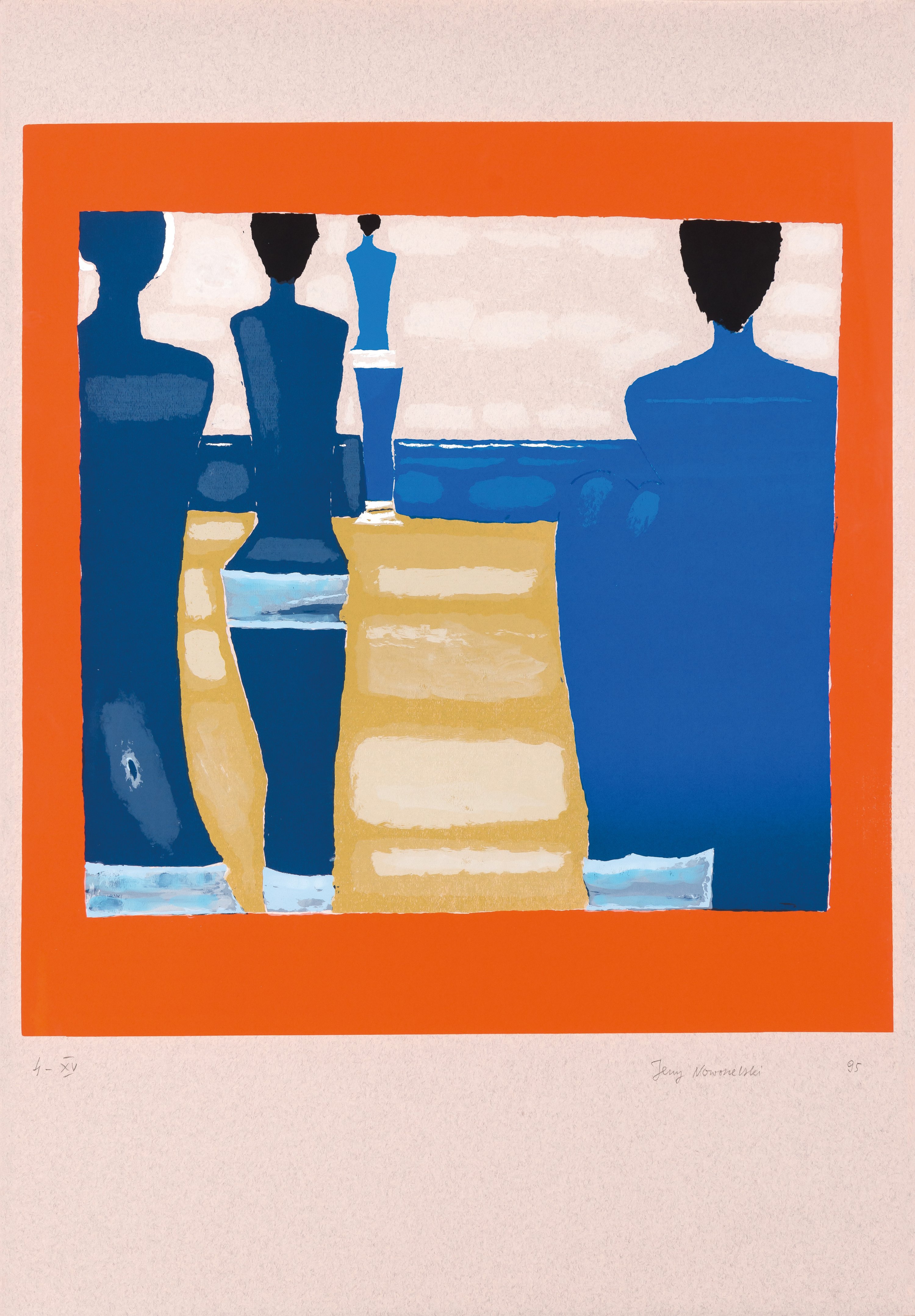Jerzy Nowosielski
b. 1923, Kraków – d. 2011, Kraków
Painter. A graduate of the Academy of Fine Arts in Kraków. His essential inspirations in painting included Eastern Orthodox doctrine and iconographic traditions. Drawing on their technique, balanced composition and minimalist lines, he also researched and described them in theoretical writings. He created numerous polychromies at Orthodox and Roman Catholic churches in Poland. He was a member of the Second Kraków Group. He represented Poland at the 28th Venice Biennale (1956) and the São Paulo Art Biennial (1959). He was decorated with the Grand Cross of the Order of Polonia Restituta (2013) and the supreme order of the Orthodox Church in Poland, the St. Mary Magdalene Medal Second Class (1985), and awarded an honorary doctorate by Jagiellonian University. He joined his wife in establishing the Nowosielski Foundation supporting young artists in 1996. He lived and worked in Kraków.
untitled
FSP ING 0007
Jerzy Nowosielski’s painting is synthetic in nature, a quest for measures allowing the perception of man, art, harmony and beauty to be contained in a single composition. Attempts to obtain a complete image occasionally reach a stage where the figurative painting approaches the abstract, which is how the artist depicted feminine forms in his serigraphic cycle. Frozen in controlled poses, the slender figures are reduced to contours, their faces remaining unseen. The limited colour palette, use of light reflections, and zonal artwork composition are all typical of Nowosielski’s style, which speaks of Byzantine icon and European sacral art inspirations.
untitled
FSP ING 0008
Jerzy Nowosielski’s painting is synthetic in nature, a quest for measures allowing the perception of man, art, harmony and beauty to be contained in a single composition. Attempts to obtain a complete image occasionally reach a stage where the figurative painting approaches the abstract, which is how the artist depicted feminine forms in his serigraphic cycle. Frozen in controlled poses, the slender figures are reduced to contours, their faces remaining unseen. The limited colour palette, use of light reflections, and zonal artwork composition are all typical of Nowosielski’s style, which speaks of Byzantine icon and European sacral art inspirations.
untitled
FSP ING 0009
Jerzy Nowosielski created figurative images while preserving an interest in geometrical abstraction. Studies of icons made him realise that the two trends in art are not mutually exclusive, and have the capacity for coexisting in any artwork. The seemingly non-representational blue abstraction may bring to mind the traditional Chinese tangram puzzle, its individual components resembling female torsos alluding to fragments of other artworks by Nowosielski, figurative pieces in particular. As he explained in an interview, “To me, abstract painting is a way our human consciousness reacts to extrasensory consciousness. Abstract works are an appropriate illustration of the reality of subtle entities affecting us and our sensitivity alike. Such records are not identical with subtle entity realities, and do not attempt to illustrate them in any way.”


